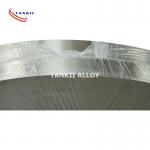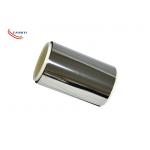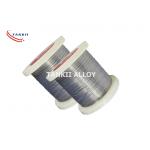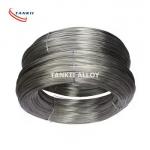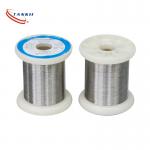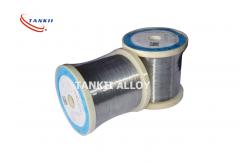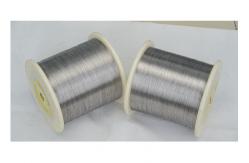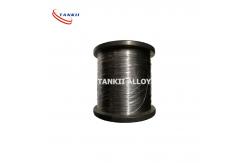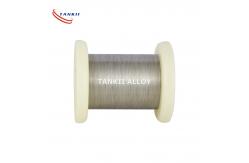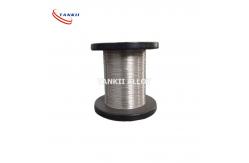NiCr Wire High Electrical Resistance Melting Point Nichrome Wire
for Slide Rhostat
1.Brief introduce
Nichrome wire is constructed from an alloy made from nickel (Ni),
chromium (Cr), and often iron, primarily it is used as a resistance
wire. It is widely used in home appliances and industrial heat
treatment area. | Nichrome Alloy Grade | Cr20Ni80,Cr20Ni30,Cr15Ni60,Cr20Ni35,Cr20Ni40 | | Forme | Round wire,Flat wire,Strip,Bar,Spring shaped, Wave shaped,Radiant
tube heater | | Size | Wire: 0.025mm-10mm
Ribbon: 0.05*0.2mm-2.0*6.0mm
Strip: 0.5*5.0mm-5.0*250mm
furnance spring wire according to customers requirement
|
| Performance material | NiCr80/20 | | Composition | Ni | Rest | | Cr | 20.0~23.0 | | Fe | ≤1.0 | | Maximum temperature℃ | 1200 | | Meltiing point ℃ | 1400 | | Density g/cm3 | 8.4 | | Resistivity | 1.09±0.05 | | μΩ·m,20℃ | | Elongation at rupture | ≥20 | | Specific heat | 0.44 | | J/g.℃ | | Thermal conductivity | 60.3 | | KJ/m.h℃ | | Coefficient of lines expansion | 18 | | a×10-6/℃ | | (20~1000℃) | | Micrographic structure | Austenite | | Magnetic properties | Nonmagnetic |
2.Feature of NiCr Alloy
(1)High resistance
(2)Low temperature coefficient of resistance
(3)High working temperature
(4)Good corrosion resistance especailly under high temperature
(5)Good performance of anti-carburizing, the atmosphere and surface
of sulfur pollution.
(6)Long useful life
3. Advantages of NiCr alloy
(1)Good corrosion resistance at high temperature.
(2)The price is cheaper than Nickel Chrome wire.
(3) It can be widely used in industrial furnacess, household
appliances and far-infrared devices.
4. The application of NiCr wire
NiCr heating wire is widely used for making electric heating
elements in home appliances and industrial furnaces. Typical
applications are flat irons, ironing machines, water heaters,
plastic moulding dies, soldering irons, metal sheathed tubular
elements and cartridge elements.
5.Application in Resistor
A rheostat is a variable resistor which is used to control current.
They are able to vary the resistance in a circuit without
interruption. The construction is very similar to the construction
of a potentiometers. It uses only two connections, even when 3 terminals (as in a
potentiometer) are present. The first connection is made to one end
of the resistive element and the other connection to the wiper
(sliding contact). In contrast to potentiometer, rheostats have to carry a significant current. Therefore they are
mostly constructed as wire wound resistors. Resistive wire is wound
around an insulating ceramic core and the wiper slides over the
windings.
As below pictures:
|
